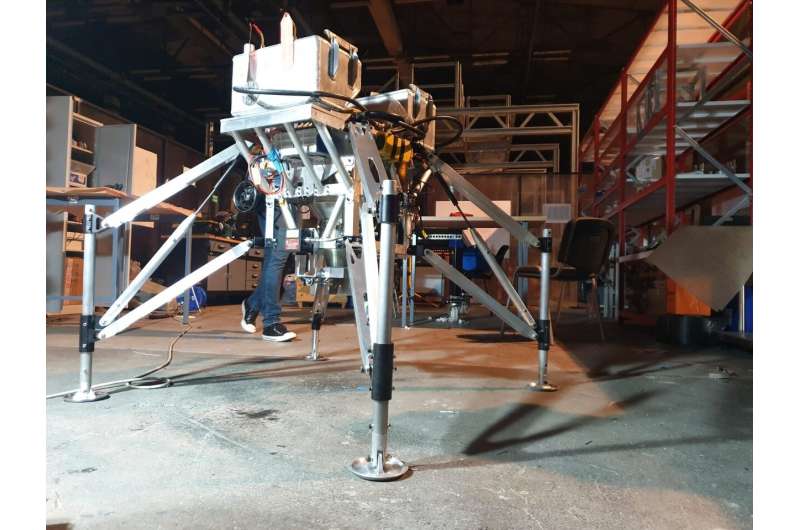Demonstrator masters flight sequences for reusable rocket stages

A crucial part of rocket reusability is a smooth return and landing. ESA has helped Romania's National Institute for Aerospace Research, INCAS, to demonstrate vertical takeoff, short hovering and landing maneuvers using a small-scale flight demonstrator.
This 60 kg platform has landing legs and is powered by a turbo jet 0.9 kN-class engine. It is capable of carrying payloads totalling 5 kg.
The demonstrator technology vehicle (DTV) was tested this summer at INCAS in Bucharest. Tethers were used as a safety measure and to protect it from damage in case of an equipment failure during flight. Maneuvers lasted ten seconds to a couple of minutes.
"The major challenges are the design and test of the guidance, navigation and control techniques. They should allow robust and autonomous control of the platform during the three flight sequences: takeoff, hovering and landing," explained Stephane Dussy, ESA's Demonstrator lead project engineer.
This project has been carried out within ESA's Future Launchers Preparatory Programme (FLPP). FLPP hones technologies for future space transportation solutions with the objective to improve the mid- to long-term competitiveness of European launch services.
The DTV is a fast track and low-cost entry step into some of the important fields being investigated and is providing precious technical results. Once qualified, it will be used as a platform for in-flight demonstrations, in particular for launcher reusability and planetary space transportation.
"These tests represent a major milestone, proving several technology building blocks for the recovery of a large scale in-flight demonstration rocket booster for the purpose of reusability," added Mr. Dussy.
ESA gave support on the vehicle design and guidance, navigation and control (GNC) and made recommendations to ensure safe testing.
Subsequent outdoor DTV flights will achieve varying heights and duration, untethered.
A more powerful DTV weighing 130 kg with three engines is also being considered and would be capable of supporting larger payloads.
Provided by European Space Agency





















